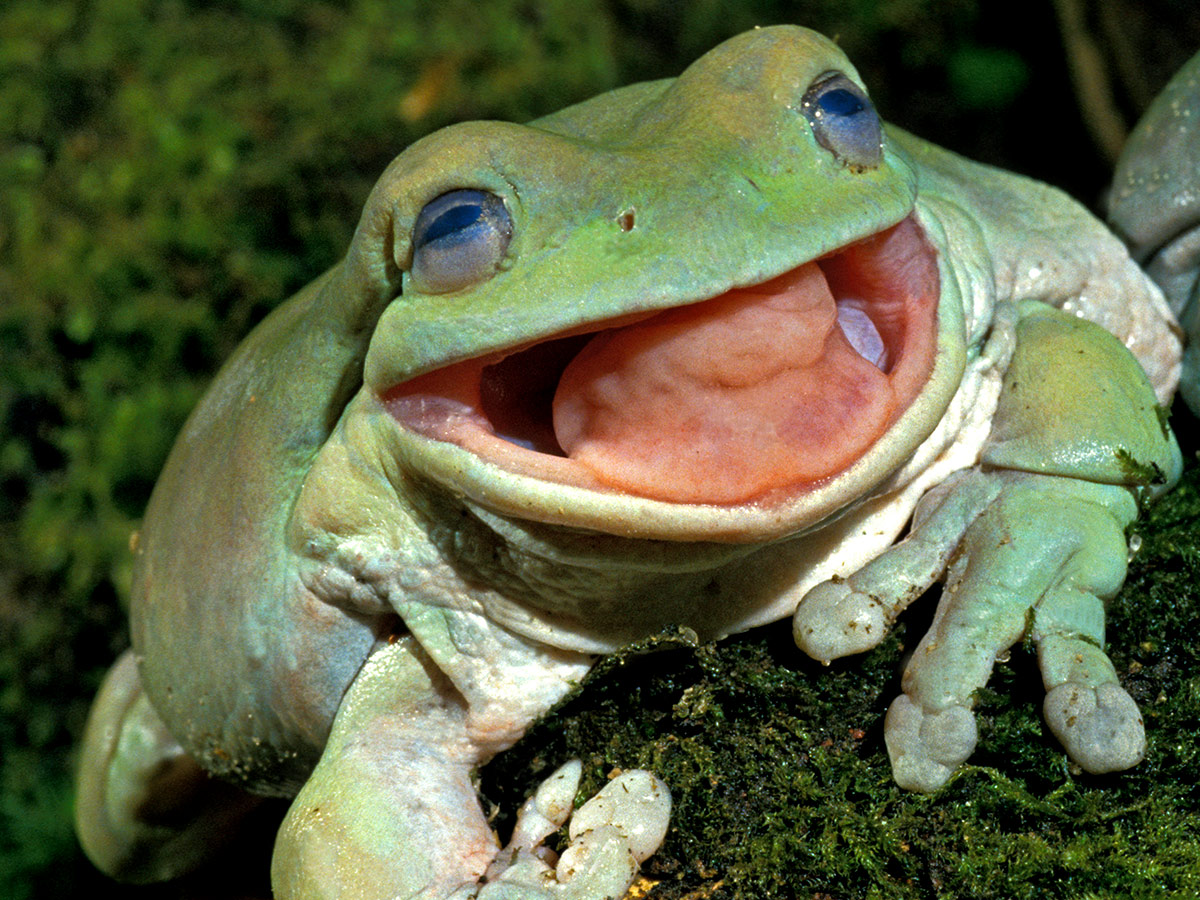Snake Head Pops Out of Frog's Maw in Mesmerizing Photo
In a stunning frog photo shared widely from Reddit, a swallowed snake isn't going down without a fight.
The swallowed snake likely didn't stay alive for long — though a frog's prey is usually gulped down alive and kicking, once the frog's mouth snaps shut, the end comes quickly, Jonathan Kolby, director of the Honduras Amphibian Rescue and Conservation Center, told Live Science in an email. Even if the prey doesn't go down easily, the frog is usually none the worse for wear, he said.
"It's easy to imagine that swallowing a vigorously struggling animal would hurt the frog," Kolby explained. "But after being swallowed, most prey items likely suffocate and die within a minute or two while being squeezed and held in place by muscles in the frog's digestive tract."
And it's not at all uncommon for a snake to be on a frog's menu, Kolby added.
"Tree frogs often consume a wide variety of prey, including snakes and even rodents, all according to how large a frogs' mouth is," he said.
The frog was identified as an Australian green tree frog (Litoria caerulea) in a tweet posted on Oct. 16 by Jodi Rowley, a curator of Amphibian and Reptile Conservation Biology with the Australian Museum and the University of New South Wales. In another tweet, Rowley suggested that the frog's esophagus appeared smaller than might be expected for an animal with such a wide gape, but it was probably somewhat constricted because the snake was still in the process of being swallowed.

The snake appears to be a baby brownsnake, according to Paul Oliver, a postdoctoral researcher at the Australian National University. That makes this interaction somewhat unusual, as many snakes are diurnal — active during the day — and frogs are nocturnal, Oliver explained.
Sign up for the Live Science daily newsletter now
Get the world’s most fascinating discoveries delivered straight to your inbox.
"It seems unlikely to have occurred naturally (but then give things enough time in nature — all sorts of unlikely things do happen)," Oliver told Live Science in an email.
One possibility? "Human agency may have played role in the snake meeting the frog, but subsequently the frog's instincts to eat anything small took over," said Oliver, who studies the systematics and evolution of frogs and lizards.
In fact, tree frogs are referred to by some as "labradors of the frog world" for their indiscriminate eating habits, as they are known for trying to eat "just about anything they can fit into their mouths," Kathleen Doody, a researcher with the School of Biological Sciences at the University of Queensland in Australia, told Live Science in an email.
Regardless, from the frog's perspective, having your meal trying to writhe its way back up your throat is probably not a pleasant experience. But there are even more extreme examples of a meal turning disastrous for frogs, Kolby told Live Science.
Epomis beetle larvae, which look like tempting grubs to a hungry frog, are actually deadly carnivores that prey on their would-be predators, Kolby said. The larvae lure the frogs closer by waving their antenna, then strike with their powerful mandibles, latching onto the frog and consuming it alive, he said.
Did the snake in the photo somehow manage to wrest itself from the frog's maw and wriggle its way to freedom? We may never know how this particular incident ended. But for one moment in a life and death struggle frozen by a photographer's lens, the prey came out ahead.
Original article on Live Science.

Mindy Weisberger is an editor at Scholastic and a former Live Science channel editor and senior writer. She has reported on general science, covering climate change, paleontology, biology and space. Mindy studied film at Columbia University; prior to Live Science she produced, wrote and directed media for the American Museum of Natural History in New York City. Her videos about dinosaurs, astrophysics, biodiversity and evolution appear in museums and science centers worldwide, earning awards such as the CINE Golden Eagle and the Communicator Award of Excellence. Her writing has also appeared in Scientific American, The Washington Post and How It Works Magazine. Her book "Rise of the Zombie Bugs: The Surprising Science of Parasitic Mind Control" will be published in spring 2025 by Johns Hopkins University Press.










